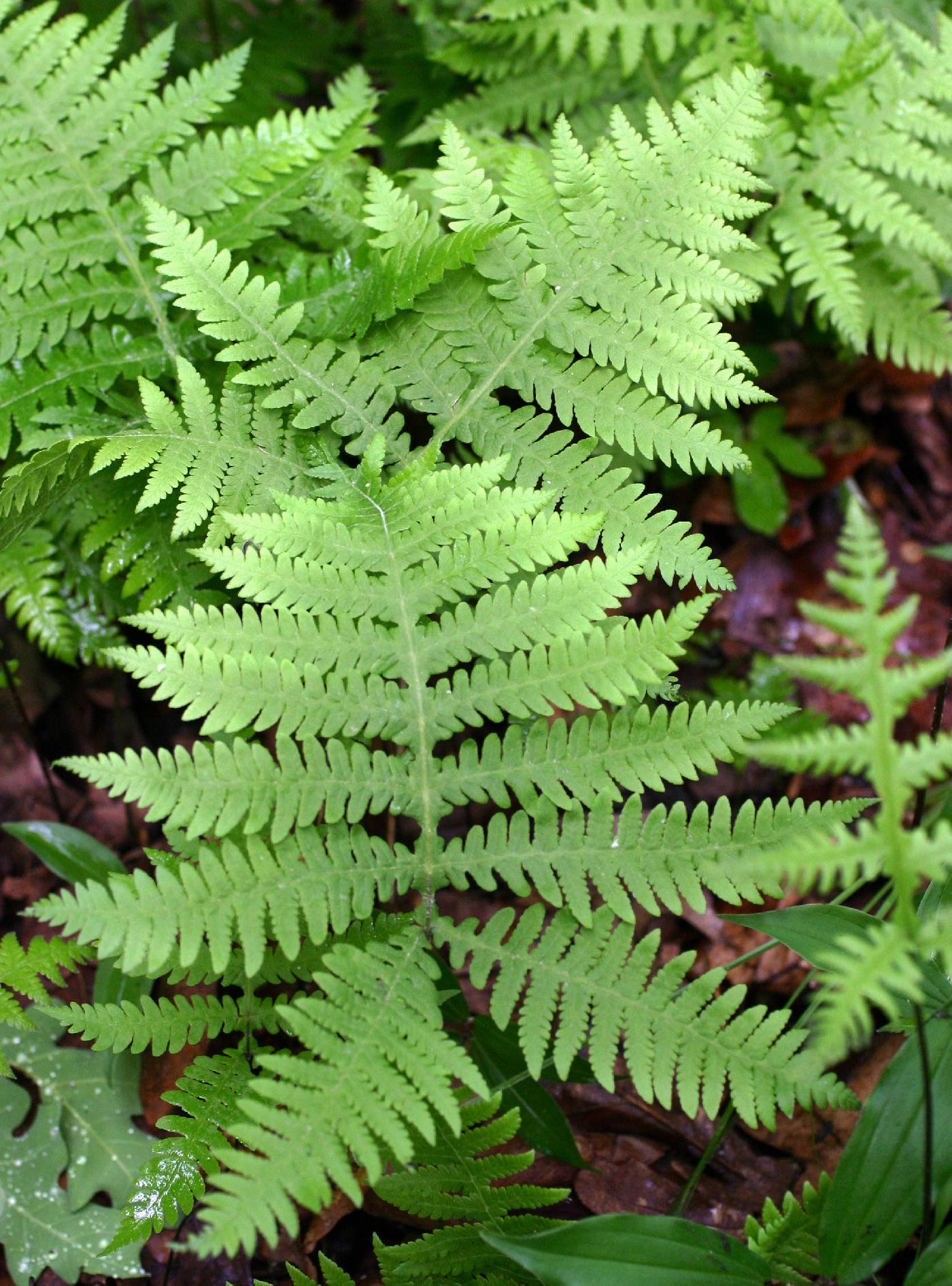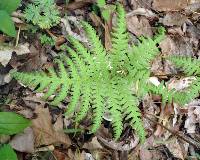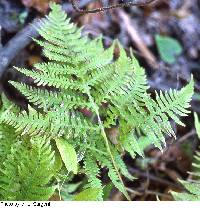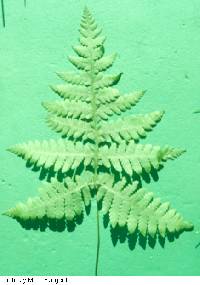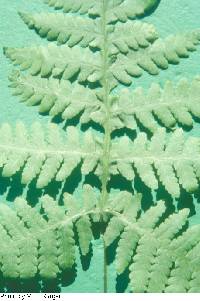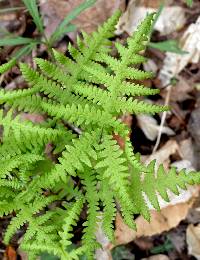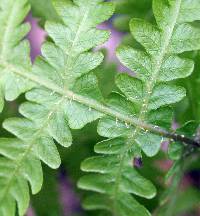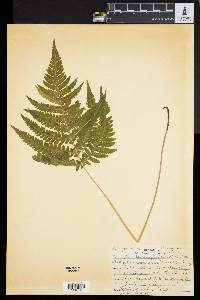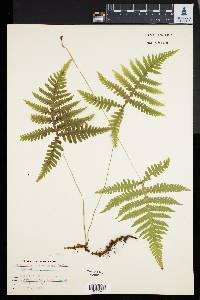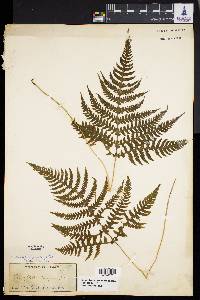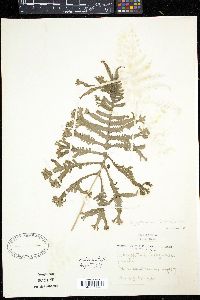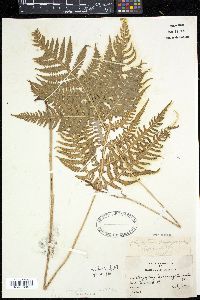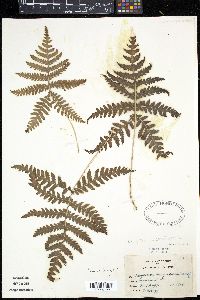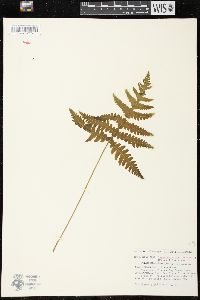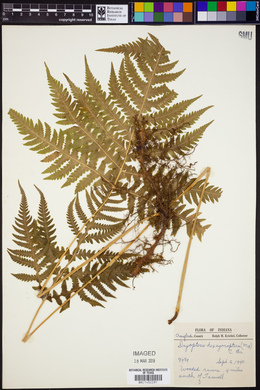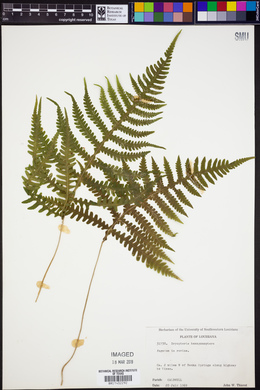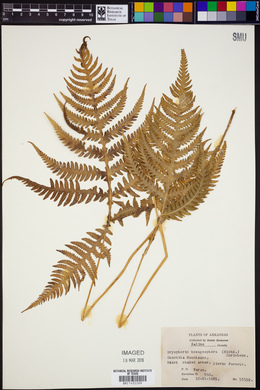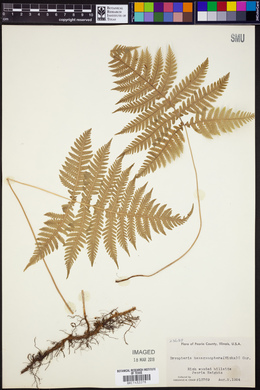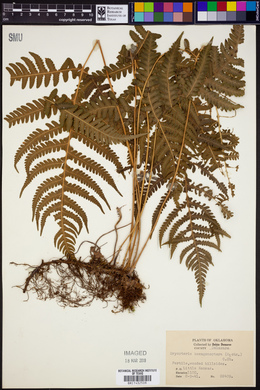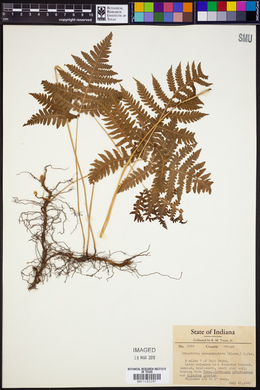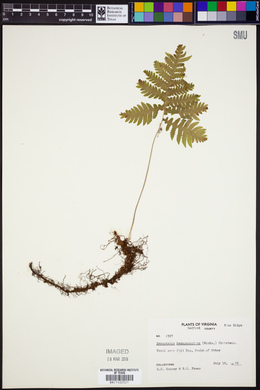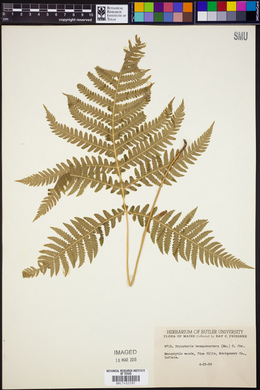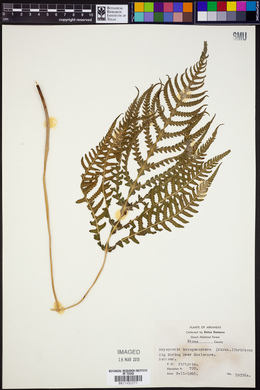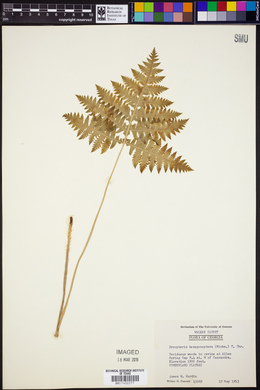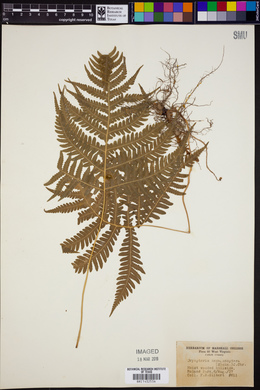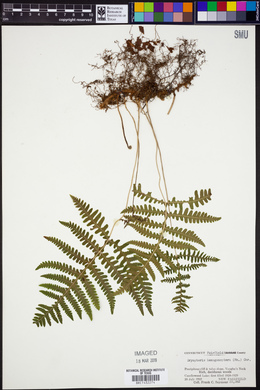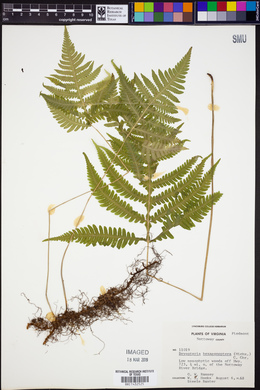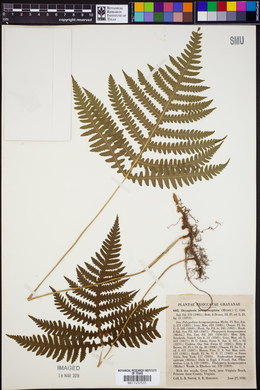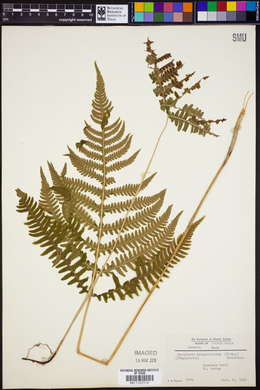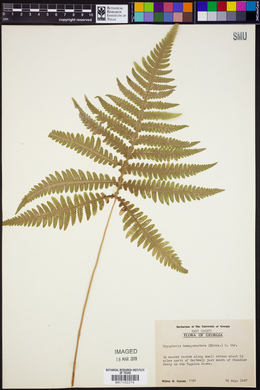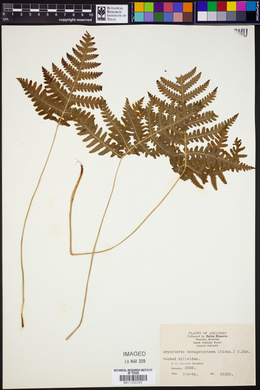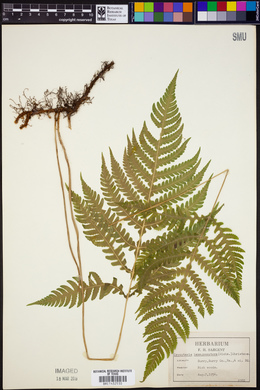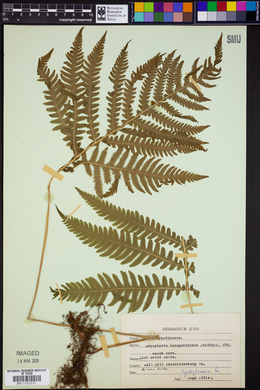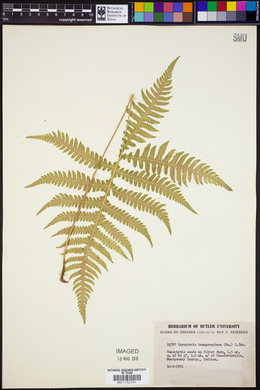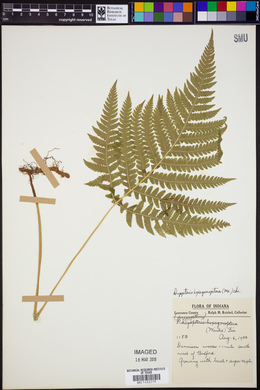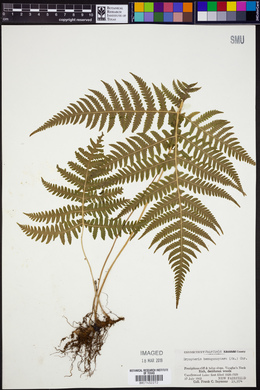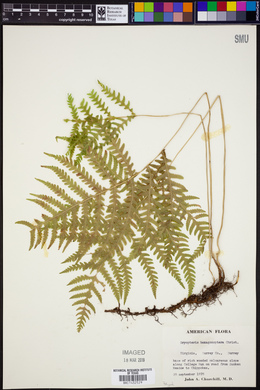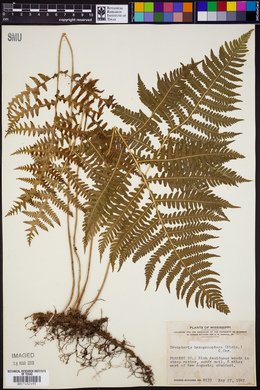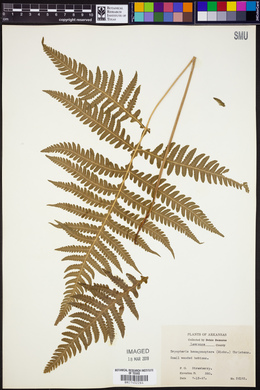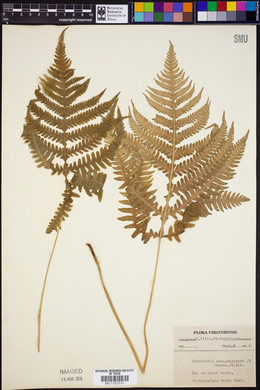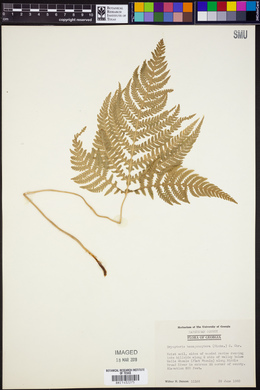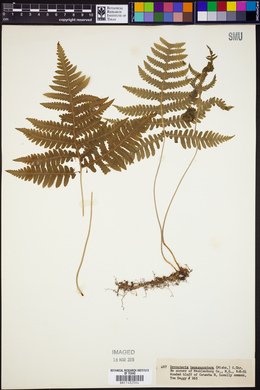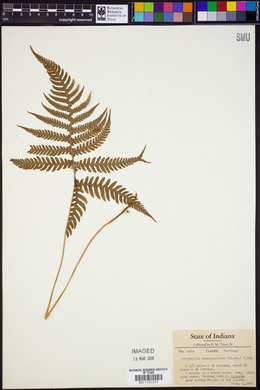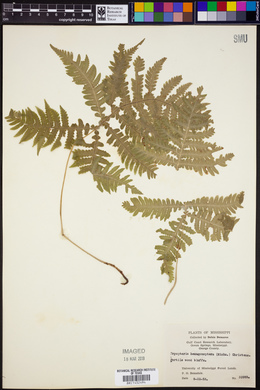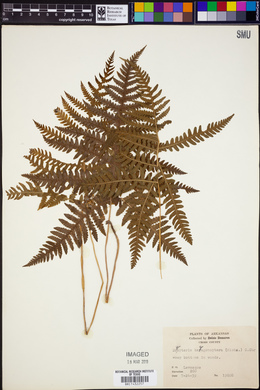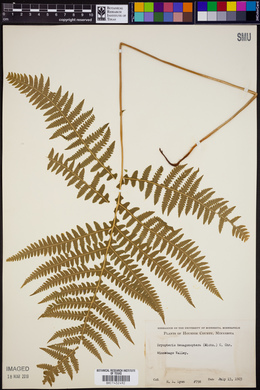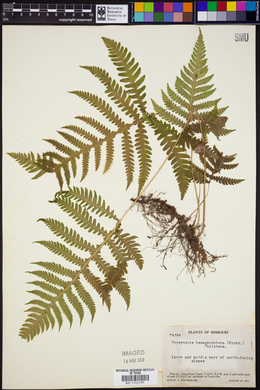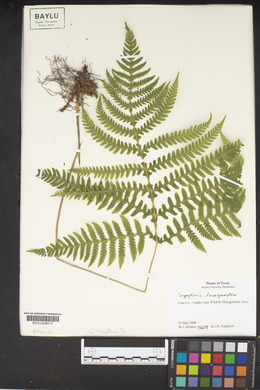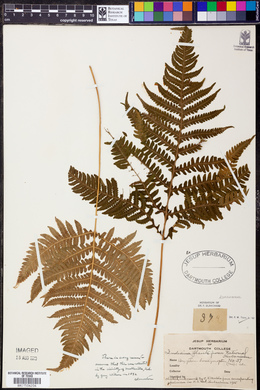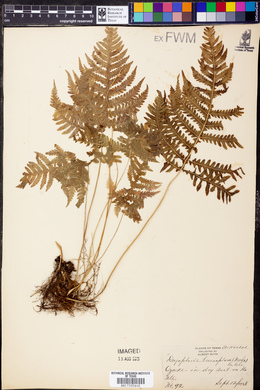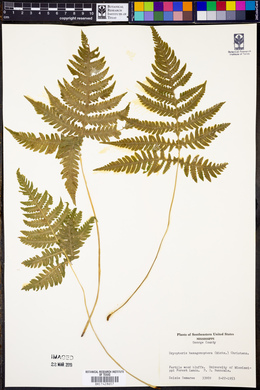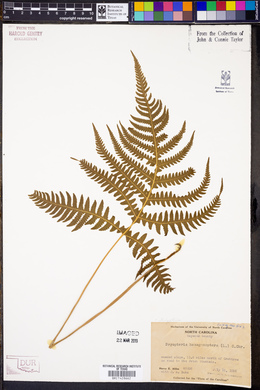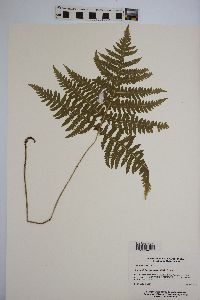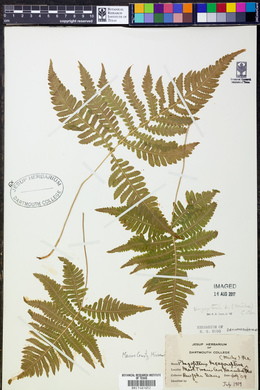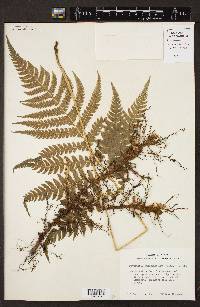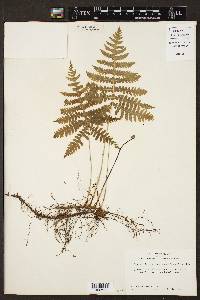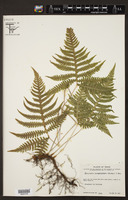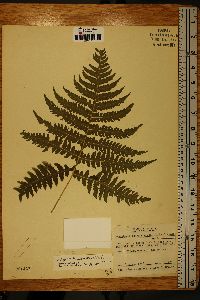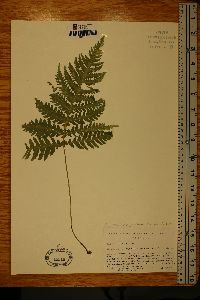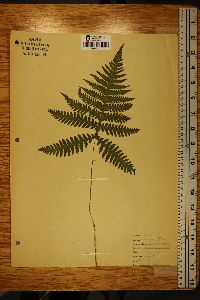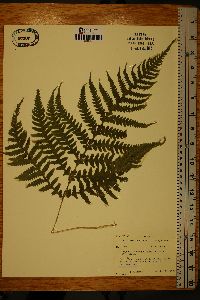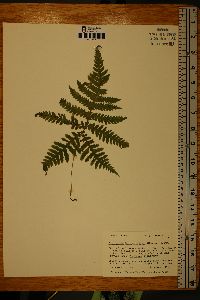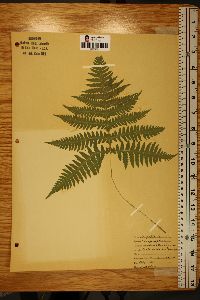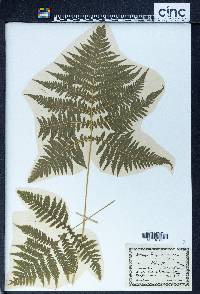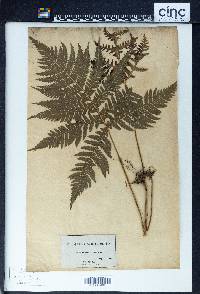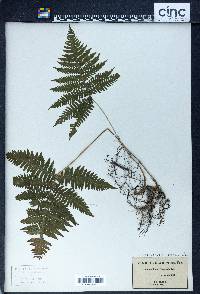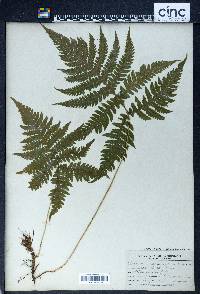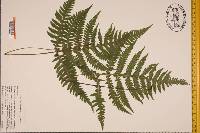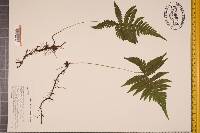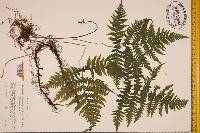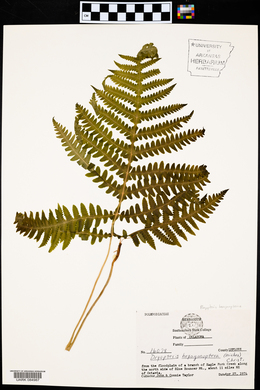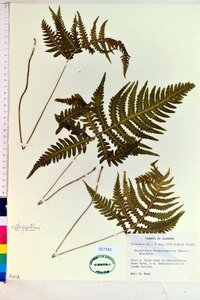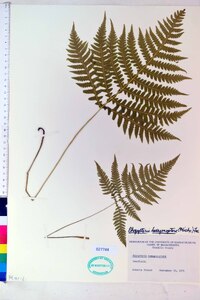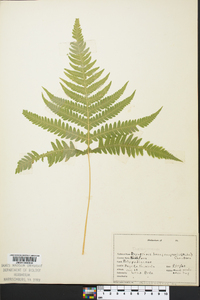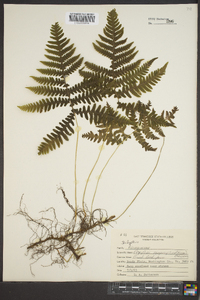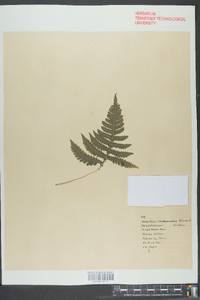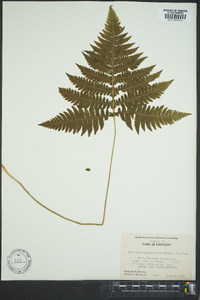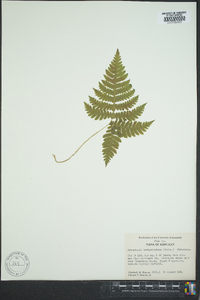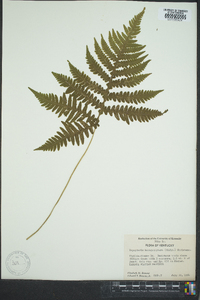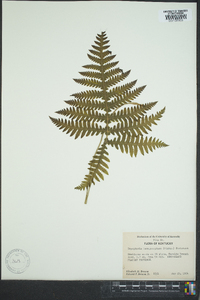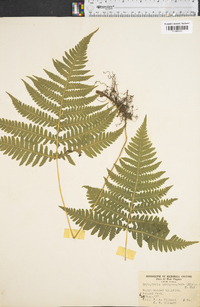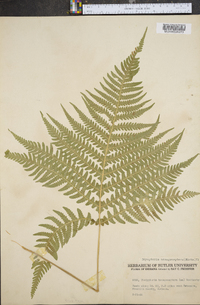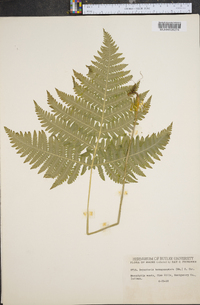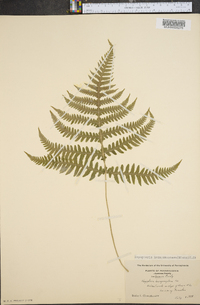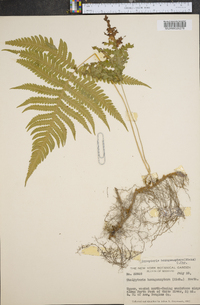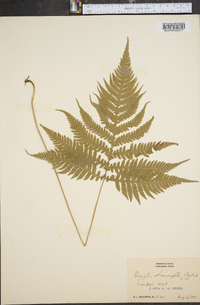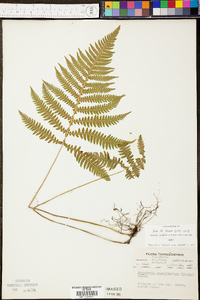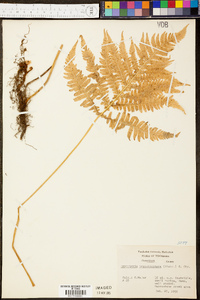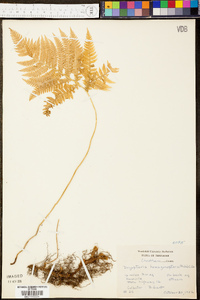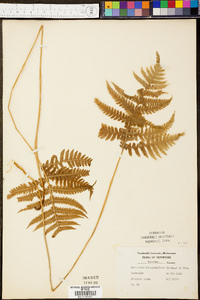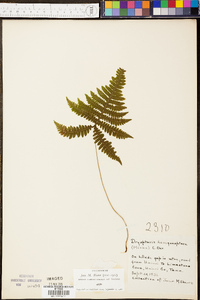Phegopteris hexagonoptera
|
|
|
|
Family: Thelypteridaceae
Broad Beech Fern, more...southern beech fern, broad beechfern
[Dryopteris hexagonoptera (Michx.) C. Chr., moreLastrea hexagonoptera (Michx.) Nieuwl., Polypodium hexagonopterum Michx., Thelypteris hexagonoptera (Michx.) Weath.] |
Stems long-creeping, 2--4 mm diam. Leaves monomorphic, dying back in winter, often 1--2 cm apart, ca. 25--75 cm. Petiole straw-colored, (7--)20--45 cm × 1.5--3 mm, at base with scales tan, lanceolate, glabrous or marginally hairy. Blade broadly deltate, about as broad as long, (8--)15--33 cm, proximal pinnae longest and narrowed at base, usually spreading or slightly ascending. Pinnae 7--20 × 2--6(--8) cm, all connected by wing along rachis, deeply pinnatifid; segments entire or largest pinnatifid about halfway to costule; proximal pair of veins from adjacent segments meeting margin above sinus, veins often forked. Indument abaxially of moderately to densely set hairs mostly 0.1--0.25 mm along costae and veins, also of yellowish stalked glands 0.1 mm on veins and blade tissue, costae with whitish to light tan, narrowly lanceolate, spreading, marginally hairy scales to ca. 1.5 mm. Sori subterminal on veins. 2 n = 60. In moist woods, usually in full shade, often in moderately acid soils; 0--1000 m; Ont., Que.; Ala., Ark., Conn., Del., D.C., Fla., Ga., Ill., Ind., Iowa, Kans., Ky., La., Maine, Md., Mass., Mich., Minn., Miss., Mo., N.H., N.J., N.Y., N.C., Ohio, Okla., Pa., R.I., S.C., Tenn., Tex., Vt., Va., W.Va., Wis. G. A. Mulligan and W. J. Cody (1979) reported hybrids between Phegopteris hexagonoptera and P. connectilis from a few localities in Quebec, New Brunswick, and Nova Scotia. These hybrids are apogamous and have a chromosome number of 2 n = 120.
Perennial fern 25 - 80 cm tall Leaves: green, 8 - 33 cm long, about as long as broad, broadly triangular in outline, but pinnately compound with leaf divisions (pinnae) deeply pinnately lobed. All the leaves die back in winter. Rhizome: long-creeping, 2 - 4 mm in diameter, sparsely hairy, but with numerous scales. Leaf stalks: spaced about 1 - 2 cm apart, straw-colored, 7 - 45 cm long, 1.5 - 3 mm wide, with tan, lance-shaped scales near base. Spores: numerous, all of one kind, and single-sectioned (monolete). The spores give rise to the gametophyte (the sexual phase of the plant), which is small, green, heart-shaped, usually hairy or glandular, and sits above the ground. Similar species: Phegopteris hexagonoptera is most similar to P. connectilis, but that species differs by having the lowest pair of primary leaf divisions (pinnae) usually shorter (3 - 12 cm), and these lowest pairs not connected to the pairs above them by a wing of tissue along the central "branch" (rachis). Further, the scales on the underside of the pinnae "midribs" (costae) are light tan to shiny brown, and more egg-shaped; the hairs on the underside of the costae are usually more than 0.3 mm long with many over 0.5 mm long; none of the pinnae lobes are deeply lobed; and the veins of the pinnae lobes are usually unbranched. Also similar are our two species of Thelypteris, T. noveboracensis and T. palustris var. pubescens, but both of those species have leaf blades with the leaf divisions (pinnae) fully divided to the "midrib" (rachis), never with connecting tissue between the pinnae, and the "midribs" of the pinnae (costae) are obviously grooved on the upper side. Members of the Dryopteridaceae family (genera such as Dryopteris, Cystopteris, Woodsia, Athyrium, and Deparia) may be confused with this species, but members of that family lack needle-like hairs, often possess scales on the leaf blades (not just the costae), and the leaf blades are typically compoundly divided much more than once. Habitat and ecology: Rare except in the eastern counties where it is sometimes frequent in rich, moist, very shady woods. Occurence in the Chicago region: native Notes: The genus Phegopteris is often included within the genus Thelypteris as a separate subgenus (this species then becomes Thelypteris hexagonoptera (Michx.) Nieuwland). We follow the Flora of North America (1993), which segregates them at the genus level rather than the subgenus level. In the past, both these genera as well as the entire Thelypteridaceae family were placed in the Dryopteridaceae family, and in the genus Dryopteris (this species then Dryopteris hexagonoptera (Michx.) C. Christensen). Current work clearly separates these families, and in fact there is no close relationship between the two. Members of the Dryopteridaceae lack needle-like hairs, often possess scales on the leaf blades, the leaf blades are typically compoundly divided more than once, the veins on the final leaf divisions often fork, and there are anatomical differences in the vascular bundles of the leaf stalks. Even other sources place both the Thelypteridaceae and Dryopteridaceae within a larger context of the Aspleniaceae family. The oldest system had all of these families (and most true ferns) placed in a very wide sense of the Polypodiaceae family. That very large family group is quite useless in terms of identifying how various fern genera and species are related from an evolutionary standpoint. Author: The Field Museum Much like no. 1 [Thelypteris phegopteris (L.) Sloss]; rhizome sparingly hairy and densely scaly; lvs 3-8 dm; petiole hairy and sparsely scaly below, smooth above; blade to 4 dm, mostly a little wider than long, bipinnatifid, the lowest pair of pinnae the largest, widely spreading, the rachis winged throughout; pinnae to 7 cm wide; veins simple or rarely a few forked; scales of the rachis few, whitish, lance-triangular; 2n=60. Moist woods and thickets; Que. and Me. to Ont. and Minn., s. to n. Fla. and Tex. (Phegopteris h.; Dryopteris h.) Gleason, Henry A. & Cronquist, Arthur J. 1991. Manual of vascular plants of northeastern United States and adjacent Canada. lxxv + 910 pp. ©The New York Botanical Garden. All rights reserved. Used by permission. From Flora of Indiana (1940) by Charles C. Deam Frequent in the southern half of the state, becoming less frequent northward and even rare in some of our northern counties. This is a woodland species found in all kinds of dry soils. It is found more frequently associated with black and white oak and only occasionally with beech and sugar maple. …… Indiana Coefficient of Conservatism: C = 7 Wetland Indicator Status: FACU |
|
|
|

